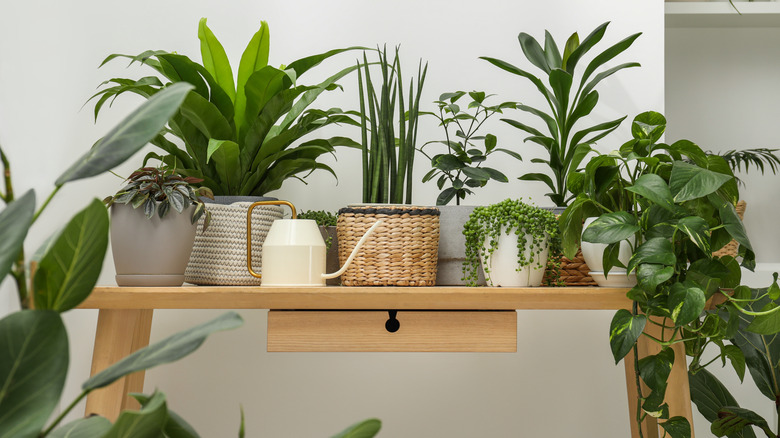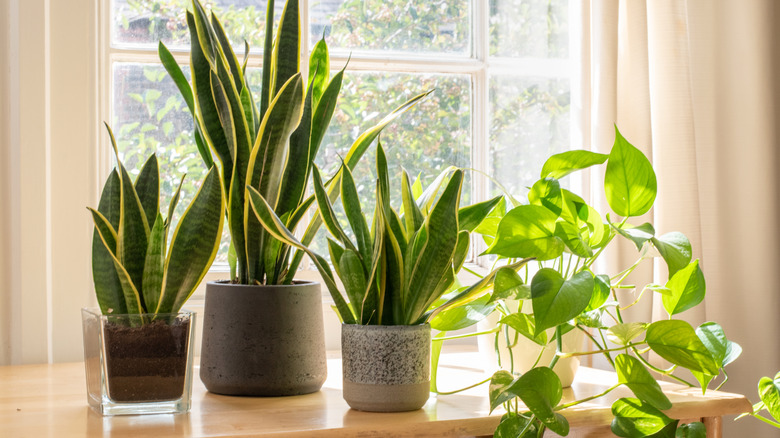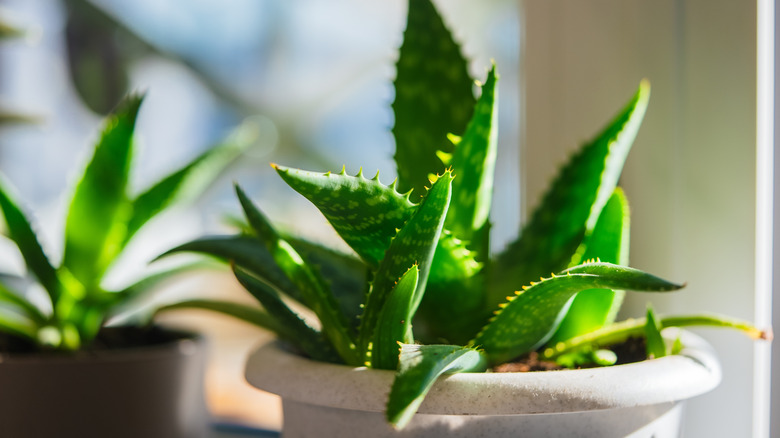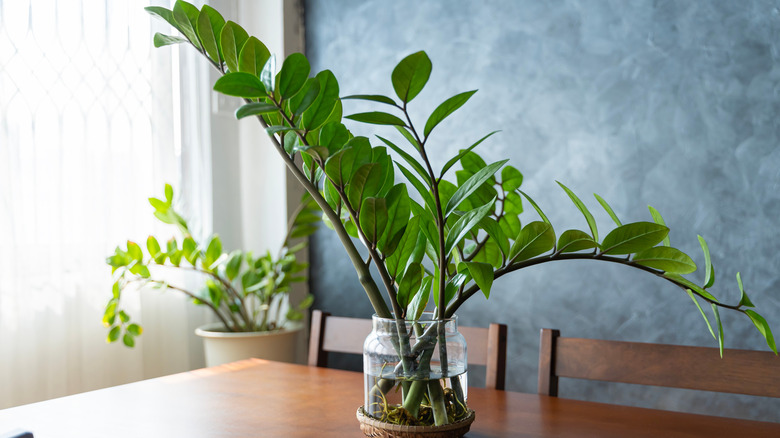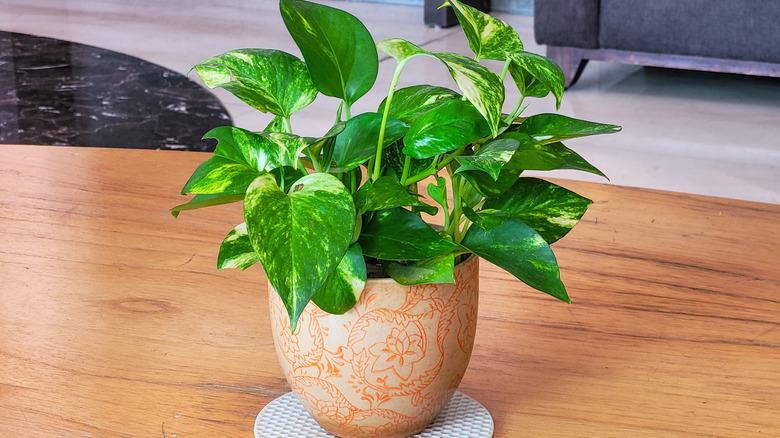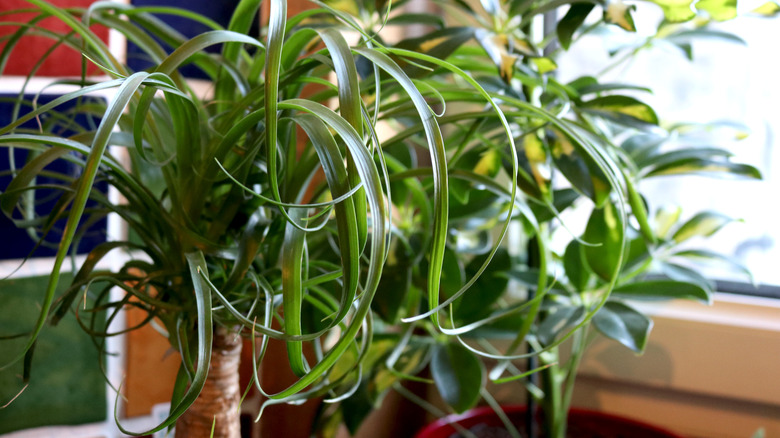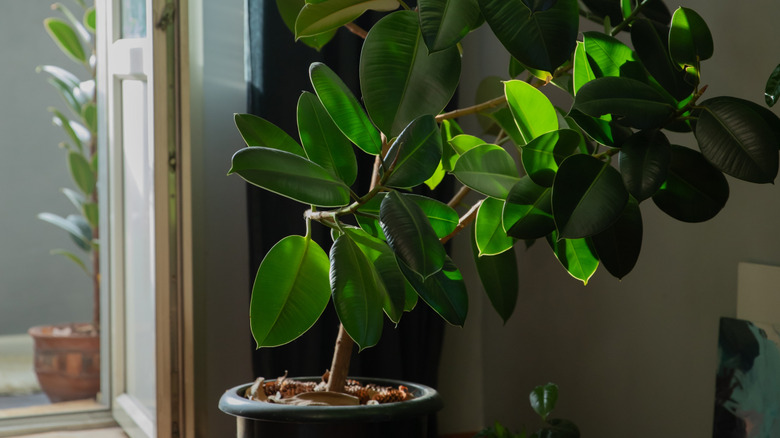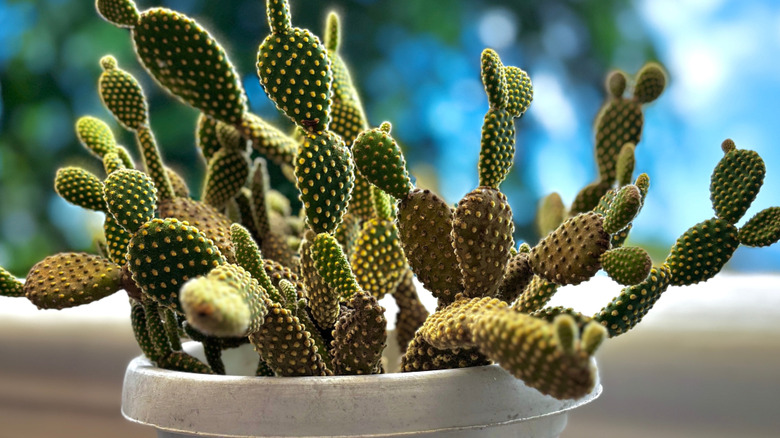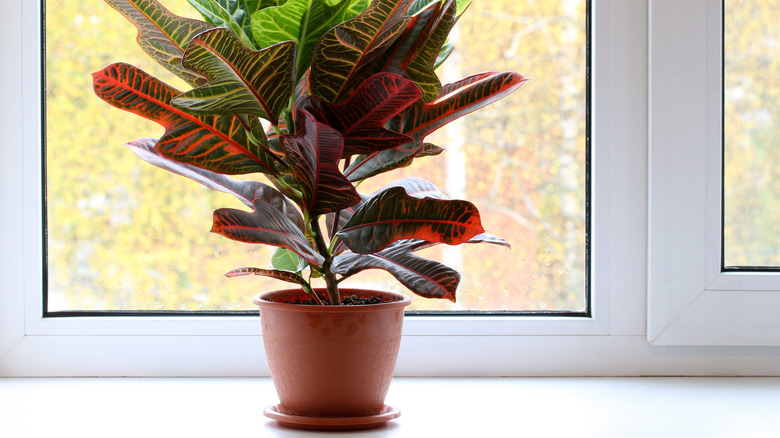10 Indoor Plants That Tolerate & Thrive In The Heat
Keeping plants healthy in a warm home can be challenging, but many indoor varieties actually prefer higher temperatures and stay strong even when the heat climbs. These plants come from regions where warm days are the norm, so they're naturally built to handle bright light, dry air, and the occasional spike in temperature. Instead of wilting or slowing down, they often grow more steadily when the room is warm and sunny. Many of the houseplants that thrive in dry climates, tolerate and actually flourish in warmer temperatures like bunny ear cactus (Opuntia microdasys), aloe vera, spineless yucca (Yucca gigantea), or snake plants (Dracaena trifasciata). If you choose plants like these that are made to handle the heat, you'll spend less time troubleshooting and more time enjoying how they fill your space.
Many heat-tolerant houseplants are built to handle the heat better than other plants. They have thicker, sometimes waxy leaves that store moisture, strong root systems, and many have lighter colored leaves that reflect the sun. Because they're tougher and more forgiving than more sensitive varieties, they are great additions to the list of the easiest plants to grow for beginner gardeners. These heat-tolerant plants don't demand constant misting, complicated watering schedules, or strict humidity levels. Instead, they offer easy care with simple routines: bright light, occasional watering, and room temperatures that stay on the warm side. Just like most plants, heat-tolerant plants don't like wide temperature fluctuations so avoid placing them in the worst spots in the home for your indoor plants such as near heat or air conditioner vents, drafty windows, or exterior doors all of which can cause cold or hot bursts that can stress your plants.
Snake Plant
Snake plants are striking, low-maintenance plants, native to Africa, that can reach heights of 2 to 5 feet tall when grown inside. These unique looking plants prefer warm temperatures ranging from 65 to 80 degrees Fahrenheit. Make sure that they are not kept anywhere temps are below 55 degrees. Snake plants enjoy a variety of light conditions, even lower light rooms as long as the temperature is right. Avoid big swings in temperature and during the winter. Keep them away from heat vents and drafty windows or doors as cold drafts can cause rot or even death.
Aloe vera
Aloe vera is native to Africa and the Mediterranean, so it's no surprise that it loves warmth and sunshine. It's happiest between 55 and 80 degrees Fahrenheit and doesn't respond well to chilly nights or sudden cold drafts. Its thick, gel-filled leaves help it handle heat and dry spells with ease, which makes it a great low-maintenance choice for bright windowsills as long as it's not in direct sunlight. Keep it out of freezing temperatures and in a nice warm spot, and your aloe vera plant will settle in and grow with very little fussing required.
ZZ Plant
The ZZ plant (Zamioculcas zamiifolia) is native to eastern and southern Africa, Kenya, and Tanzania, so it naturally knows how to handle warm temperatures. It's most comfortable in warm indoor temperatures, from 65 to 90 degrees. You may notice a pause in growth and the leaves becoming discolored in temperatures below 50, and it doesn't tolerate freezing temperatures at all. As long as you can keep it out of cold drafts, it will be a great addition to your houseplant family.
Yucca
Yucca is native to the southwest U.S., Central America, and the Caribbean, so it's built to handle heat and dry conditions without breaking a sweat. Indoors, it prefers steady warmth within a range of 60 to 95 degrees. The ideal growth range is between 70 and 80 but if it stays well hydrated, the yucca plant can even handle short bouts with temps as high as 110! (Of course, this probably won't be an issue indoors.) If this heat-loving plant is exposed to temperatures below 50 for extended periods of time the plant can sustain damage.
Golden pothos
Golden pothos (Epipremnum aureum) is a popular plant native to the French Polynesian Islands. It thrives indoors in warm homes with high humidity and isn't a fan of cold temperatures. Golden pothos thrives in consistent warmth between 60 to 85 degrees, so keep this common houseplant in a nice warm place in your home where there are no drafts and avoid abrupt temperature changes to keep it healthy and thriving.
Ponytail Palm
The ponytail palm (Beaucarnea recurvata) comes from the dry, desert regions of eastern Mexico, so it naturally appreciates warm indoor conditions. It's happiest between 60 to 80 degrees, which is where most homeowners keep their inside temperatures. While the ponytail palm can handle a brief drop to about 50 degrees, it really struggles with anything colder. Prolonged exposure to 50 or below is not good for this plant. Keeping it away from drafty doors or cold windows helps it stay healthy and produce those lovely fountain-like leaves.
Rubber plant
The rubber plant (Ficus elastica) originally comes from the tropical rainforests of Southeast Asia and loves heat and humidity. Indoors, it feels most at home in comfortably warm rooms from 75 to 80 degrees during the day and 60 to 65 at night. Your rubber plant will become stressed with sudden temperature drops or by being in a place where it is frequently hit with cold drafts. Finding a warm spot away from vents, doors, and drafty windows will keep your rubber plant thriving.
Bunny ear cactus
The bunny ears cactus (Opuntia microdasys), native to desert regions of northern Mexico, is a charming little succulent with pad-like stems that look like rabbit ears. Indoors, it grows best in warm, dry conditions between 70 to 90 degrees in bright sun during the day. In winter, it prefers cooler nights around 60 to 70 degrees. As with most cacti, this plant likes to dry out completely between waterings.
Prayer Plant
The prayer plant (Maranta leuconeura) comes from the tropical rainforests of Brazil, so it really appreciates a warm, humid indoor environment. This lovely plant thrives in temperatures between 65 to 85 degrees. If temperatures drop below 55 to 60, it can cause leaf wilting, curling, or splotches on the leaves from the stress of being too cold. Keep it away from drafty windows or air conditioner vents, and provide cozy, consistent temps for it to feel right at home.
Croton
Croton (Codiaeum variegatum) is native to tropical Southeast Asia and the Pacific Islands, which explains its love for warmth. Indoors, it thrives in temperatures between 60 to 85 degrees, but it doesn't handle cold well. Temperatures below 60 can cause stress, and prolonged exposure under 50 may make leaves drop or even damage the plant. To keep it looking its vibrant best, keep it in a humid, warm corner away from drafty windows or air vents.
